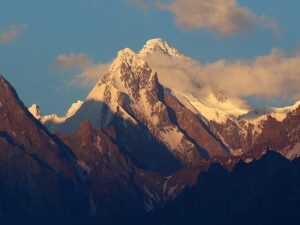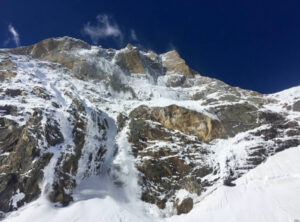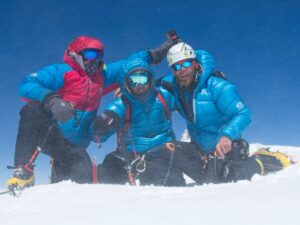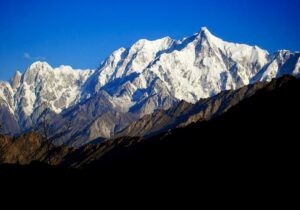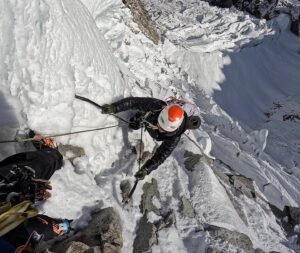The Alps, the largest mountain range exclusively in Europe, has over 3,000 mountains. So it’s not surprising that alpinism began here.
Early trailblazers Paul Preuss, Georg Winkler, and brothers Emil and Otto Zsigmondy made vital contributions to mountaineering both as a sport and as a culture.
More than athletics
On December 11, 2019, alpinism officially became an Intangible Cultural Heritage of Humanity, as designated by UNESCO.
Besides the basic definition of alpinism, the UNESCO text pointed out, “Alpinism is also based on aesthetic aspects: alpinists strive for elegant climbing motions, contemplation of landscape, and harmony with the natural environment…[and] the sense of team spirit, as represented by the rope connecting the alpinists.”

Elizabeth Hawkins Whitshed, Irish mountaineering pioneer. In 1907, she became the first president of the Ladies Alpine Club. Photo: Filson
Paul Preuss and climbing ethics
In order to enrich this art, one should not forget the past and those mountaineers whose heritage is still alive among real alpinists. Among those pioneers was Paul Preuss of Austria, whom biographer David Smart called Lord of the Abyss.
Preuss was famous for his bold solo ascents and is considered the father of the pure climbing style. He died at just 27. However, he left behind a lot of articles on climbing ethics. His thinking inspired future climbers, including Reinhold Messner.

Paul Preuss.
At home, Preuss had two photographs on the wall: one of Georg Winkler and one of Emil Zsigmondy. These two mountaineers had the greatest influence on him.
Winkler and the Zsigmondy brothers completed a lot of first ascents, and several features in the Alps are named after them. They were among the pioneers of guideless mountaineering.
Moving on from guided climbs
Early on, the normal practice was to go with guides. England’s Alpine Club did not welcome new ideas about ascending mountains without a guide. But in the 1850s and 1860s, this gradually started to change.
In 1856, E.S. Kennedy and C. Hudson climbed Mont Blanc on their own. Then in 1858, J. Tyndall summited Duforspitze. In 1862, Edward Whymper attempted the Matterhorn alone.
In the 1870s, the guideless revolution started to spread from the eastern Alps through the whole range and beyond. The new climbing philosophy was that you could achieve total freedom only by your own efforts. By the 1880s, the Alpine Club was more open to this trend.

Emil Zsigmondy, a role model for Paul Preuss. Photo: Wikimedia
The Zsigmondy brothers
In 1879, Emil Zsigmondy, then 18, and his 19-year-old brother Otto made the first ascent of 3,089m Feldkopf (now called Zsigmondyspitze). Five years later, they did the first traverse of Marmolada — Punta de Rocca to Punta Penia — with Austrian alpinist Ludwig Purtscheller. They followed this with the first ascent of Monte Civetta.
The Zsigmondy brothers also wrote a famous book, Die Gefahren der Alpen (The Dangers of the Alps). Almost a century and a half later, it remains a much-consulted manual among contemporary climbers.
In the summer of 1885, the Zsigmondy brothers and Purtscheller decided to climb La Meije, one of the most difficult 3,000m peaks in the Alps.

Routes on La Meije. Photo: Camptocamp
La Meije
At 3,984m, La Meije is the second-highest peak of the Ecrins Massif in the Dauphine Alps. It was the last major peak in the Alps to be climbed. Its name comes from the Provençal word meidjo, which means “midday.” The inhabitants of La Grave, a village north of the peak, called it the “midday needle” because from their location, the sun passes over the mountain at noon.
It has several spires and subpeaks, but the main peak is the Grand Pic de La Meije.

The Grand Pic of La Meije and the upper section of the normal route. Photo: Camptocamp
Climbing La Meije, a difficult ice and granite citadel, has been always difficult. Even for today’s best rock climbers, its routes are challenging.
There had been at least 28 attempts on the main peak between 1870 and 1877. Then on August 16, 1877, French alpinist Pierre Gaspard, his son, and Emmanuel Boileau finally summited it for the first time. They ascended the south ridge, the so-called Arete Promontoire, via the south face.
La Meije, 1885
Eight years after the first ascent, between July 25 and 27, 1885, the Zsigmondy brothers and Purtscheller did the first traverse of the aretes of La Maeije. They climbed from east to west, also carrying out the first ascent of the east ridge. After summiting, they rappeled down, hammering in pitons as they went.
That same summer, the Zsigmondy brothers and German climber Karl Schulz targeted the dangerous south wall of La Meije.

The south wall of La Meije. In yellow: the route opened on the Doigt de Dieu, on the south face of La Meije, in 2021 by Benjamin Ribeyre, Erin Smart, and Cyril Dupeyre. Photo: Jocelyn Chavy/Alpinemag
The small team started on August 6, 1885, from the Refuge du Chatelleret. During the ascent, Emil slipped and fell 700m into the void. His brother Otto and Karl Schulz descended to the place where he fell, but there was nothing they could do. Emil was dead at age 23. Without a doubt, he was one of the trailblazers of modern alpinism.
Emil Zsigmondy is buried in the cemetery of Saint Christophe-en-Oisans. On his tomb is written, EXCELSIOR, meaning “Ever upwards!”
Georg Winkler, Paul Preuss’ other favorite climber, used Excelsior as the title of his book. Winkler also died young. In 1888, at just 19, he died in an avalanche during his solo ascent of the Weisshorn (4,506m).

The grave of Emil Zsigmondy. Photo: Jean-Philippe Beaucher

